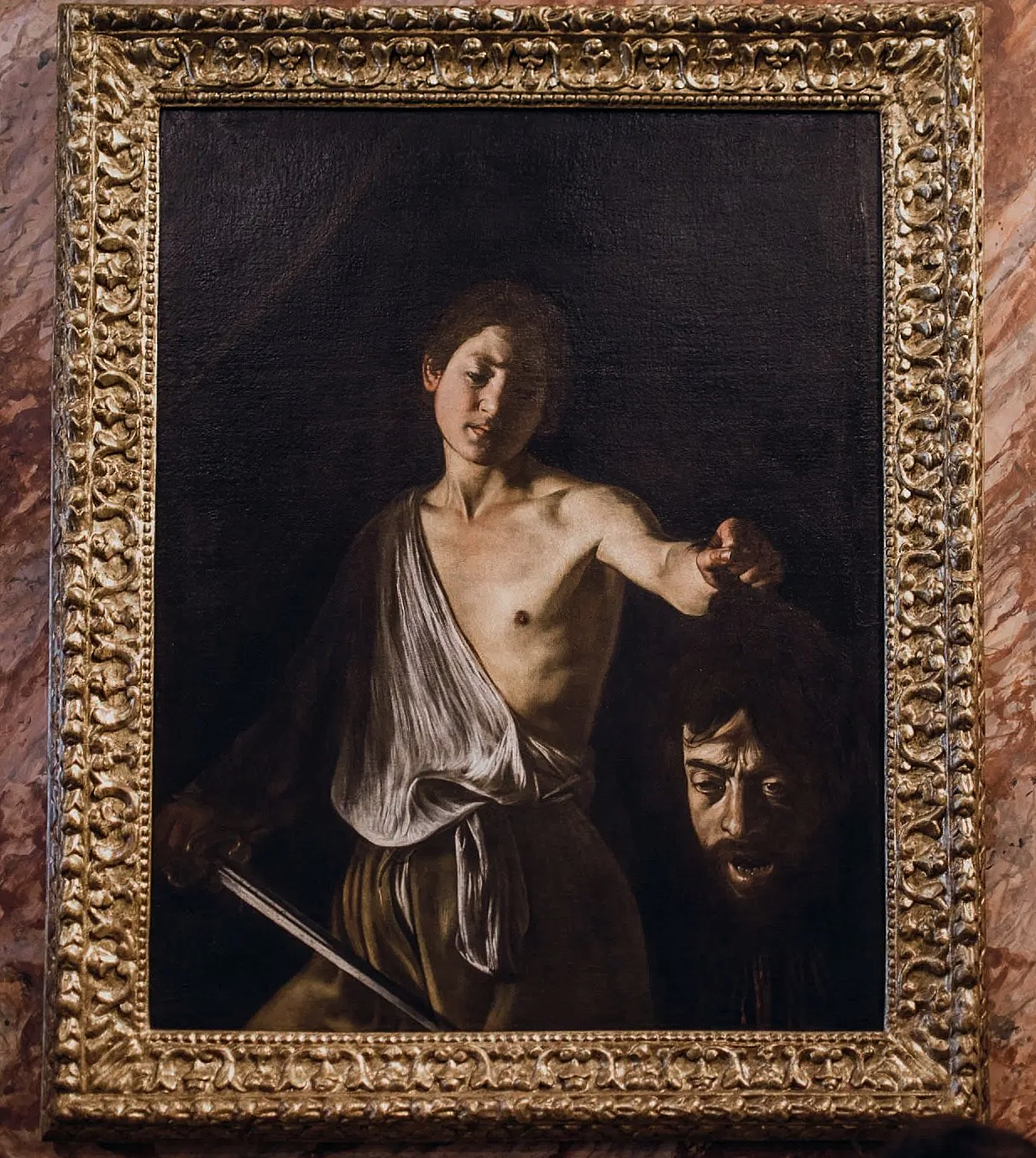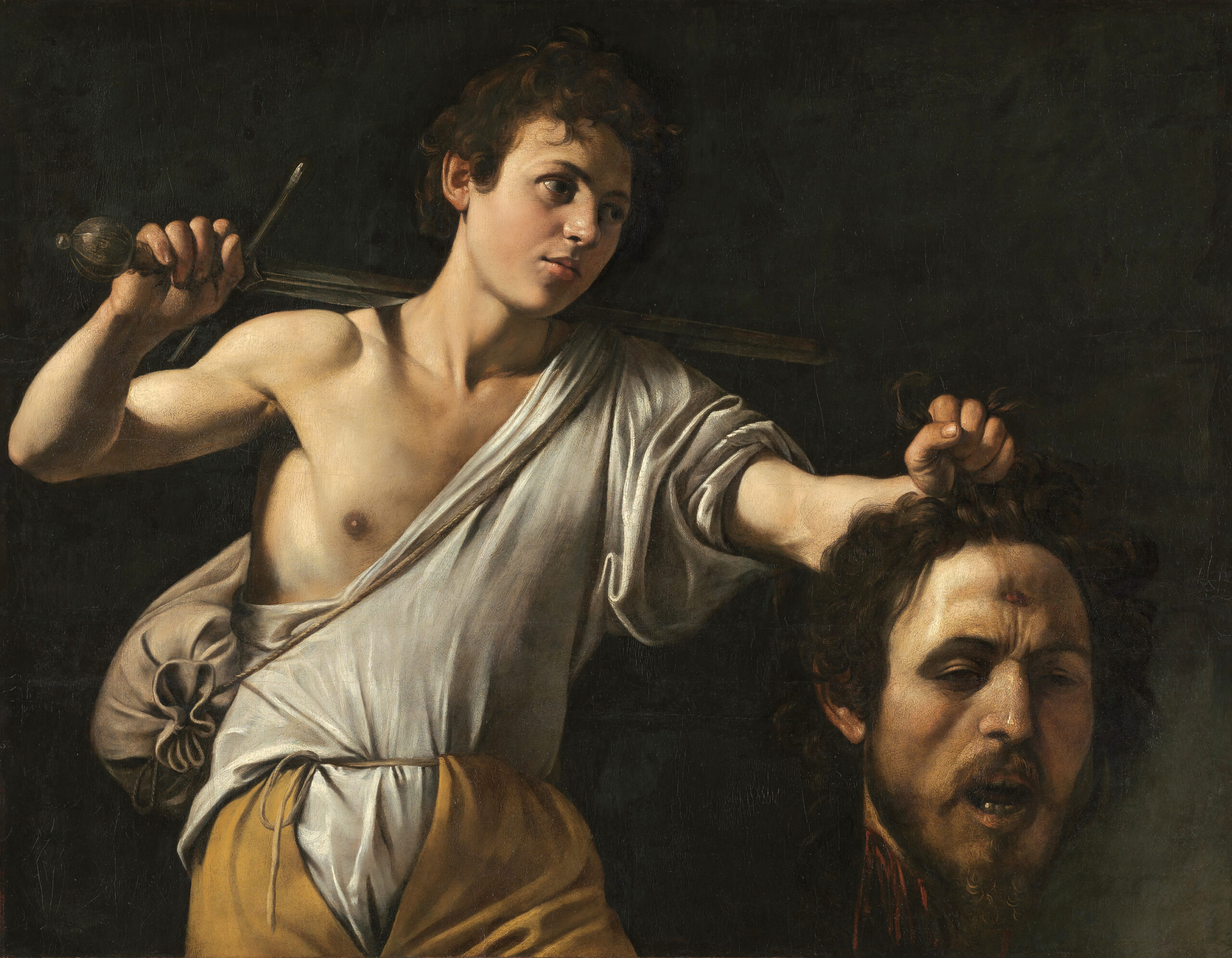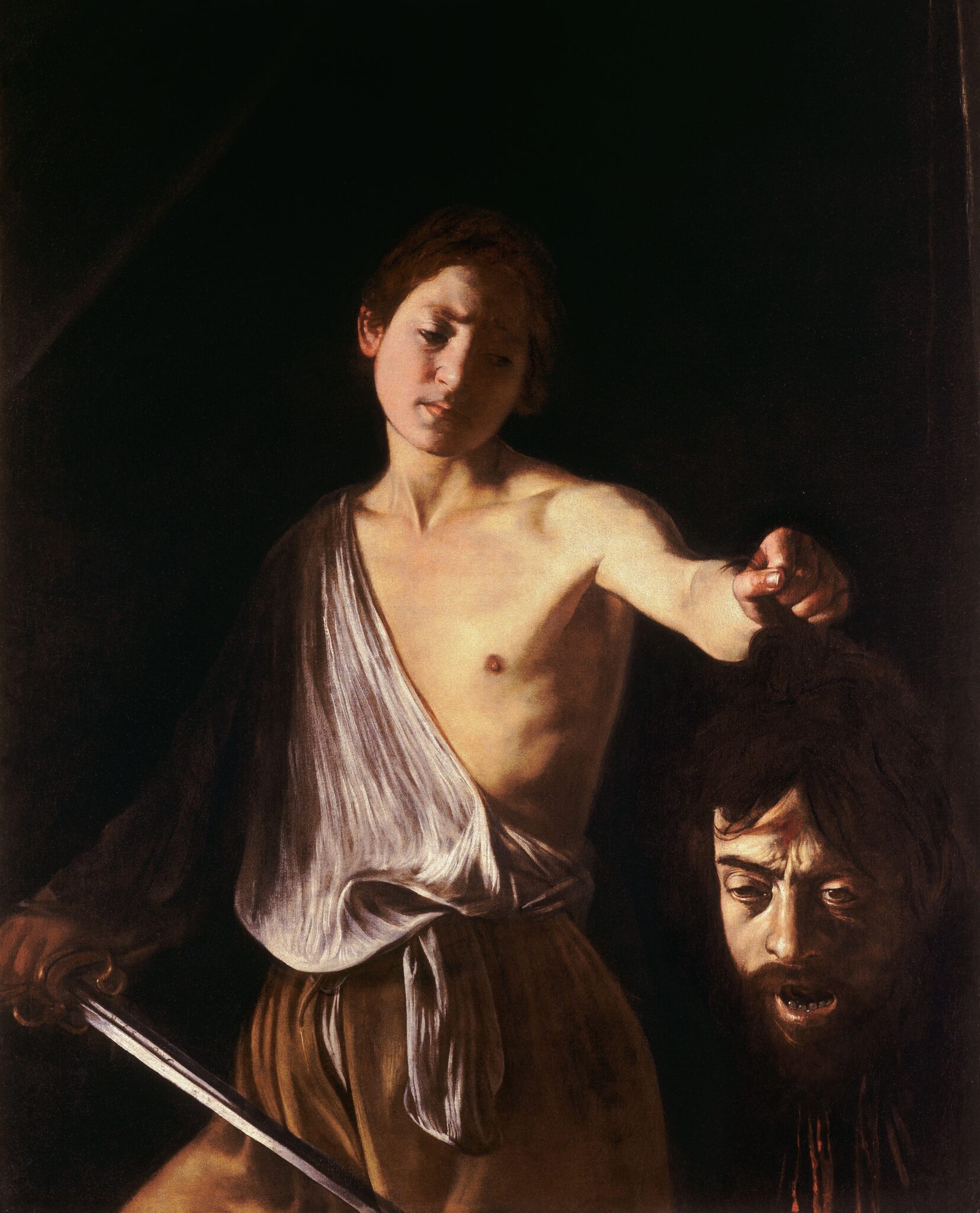
Caravaggio (Italy, 1571–1610)
David with the Head of Goliath
oil on canvas
200 x 100 cm (78.7 x 39.3 in.)
painted circa 1609–1610
Collection of Galleria Borghese, Rome

Caravaggio (Italy, 1571–1610)
David with the Head of Goliath
oil on poplar wood
91.2 x 116.2 cm. (35.9 x 45.7 in.)
painted circa 1600-1601

The 17th-century Baroque painter Caravaggio seemed fascinated by the biblical episode of David and Goliath. He painted 3 versions. This is the last one, probably painted shortly before his death.
The future king of Israel, young David, presents King Saul with the head of the Philistine giant Goliath. He has just killed him with his slingshot and holds in his hand the sword with which he decapitated him.
Goliath's head, which seems to spring from the shadows in Caravaggio's mastery of chiaroscuro, is deathly pale. The open mouth suggests terror, and the blood drips from the decapitated head, but the open eyes convey dazedness and give the face a last semblance of life.
This head could be that of the painter himself. He has already painted himself as a sickly Bacchus. But this would be his last self-portrait as a man defeated by divine justice.
And for good reason, Caravaggio had been facing death for several years. Condemned for the murder of Ranuccio Tomassoni in Rome in 1606, he fled: Naples, Malta, Sicily. There was a price on his head, and he too risked decapitation.
His last hope? Scipio Borghese, nephew of Pope Paul V, could plead on his behalf. A great art lover, he collects masterpieces in his Roman villa, Villa Borghese. In order to win him over, he paints this picture, the repentance of a man who has done wrong, but who symbolically surrenders.
But what about David? His gaze on Goliath is not devoid of pity. At least, it's not the proud gaze of a victor. Could this be the face of a young Caravaggio, pitying the man he has become, in a double self-portrait? Could it be the face of a young lover of the painter's, who can't help mixing prosaic sensuality with biblical themes? The way David holds his sword makes it more than ever a phallic object...
Although Pope Paul V pardoned Caravaggio, the latter never returned to Rome. He died, mysteriously, on a beach on his way back.










